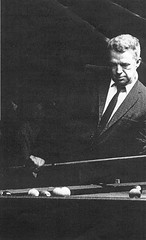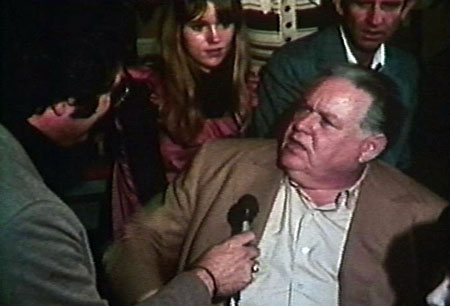 This is the second of a series of posts written in coordination with other online pool writers. It's part of the Pool Synergy project hosted this month by Samm Diep's pooltipjar.com. Look for more installments in the future.
This is the second of a series of posts written in coordination with other online pool writers. It's part of the Pool Synergy project hosted this month by Samm Diep's pooltipjar.com. Look for more installments in the future.Our
PoolSynergy topic this month is “Billiard Tales.” As part of my contribution I'm giving everyone an assignment. Find a poolroom in your area popular with the old timers and sidle up next to a few of them at the bar. It’s important that you find at least two or three of these guys sitting together. Four is even better. And I’m not talking about the middle-aged guys, I’m talking about the
really old ones, the guys who have been around the pool halls 30 or 40 years at least.
Buy them a beer if you want, or just sit quietly. And then wait.
I guarantee you that within the first half hour you’ll start hearing stories of who took whom and for how much, or about the time some shark came to town, or about the big score by the local champ. Some stories will be verifiable, others not so much. I’ve even heard deadly serious
tales of the supernatural.
To me, the form of these billiard tales is just as interesting as the content. That is, it's not what the stories are about,
per se, but
how they're communicated. The oral tradition is key. Most of the great old stories never get written down, never appear in newspapers -- and they grow in the telling. These stories pass from older players to younger ones, and as long as the community remains intact -- e.g., as long as the poolroom remains standing and the same men and women continue to frequent it -- the legends remain alive.
Now here's a thought. Bear with me, but I think it's true. I believe these boozy recollections have a lot in common with the colorful stories that might get told by village elders around a camp fire. Listen to the old timers and you'll hear tales of heroes and villains and especially tricksters. Oral tradition (according to my quick research on
Wikipedia) refers to the "transmission of cultural material through vocal utterance.” The oral traditional also has long been associated with folklore. I would argue that many of the stories told by old-time pool players are part of the
folkloric tradition, but of an urban sort.
Some of my favorite Billiard Tales involve
Minnesota Fats. In them Fats might be razzing an event promoter about the dress code, or cracking wise about the straight-laced "fun players," or gleefully robbing a tournament player during a high-dollar gambling session. These stories typically pits Fats against some symbol of the conservative billiards establishment.
As is the case with many trickster stories from folklore, Fats in these stories becomes an amoral and comic figure confronting the hypocrisy of the status quo. The billiards establishment would portray our sport as a clean-cut endeavor where no one ever gambles and where the dress code is strictly enforced. Minnesota Fats would portray it for what it
really is. As a classic trickster, Fats confronts established authority, lies, and can act in amoral ways. But he also becomes an
ironic symbol of truth.
I used to live in San Jose, Costa Rica. I remember hearing stories there about a hustler named “
Pichitas” -- about how he would send well-dressed businessmen packing, or how he created this great shot from
nowhere, or how he became a master of the 5 by 10s. I even remember the
Pichitas "origin myth" -- in that stories were told about how he got his name (which, by the way, translates to “Tiny Dicks.”) These stories were told with something approaching reverence and at first I thought they were specific to Latin America. But I later discovered that they could have just as easily been told about
Wimpy Lassiter or
Jersey Red or
U.J. Puckett. In each case, the players are portrayed as heroic or trickster figures, and in each case the stories are passed along directly through word of mouth. I also recognized in each case messages about the "culture" of the pool room, in that they would communicate lessons about such matters as gambling etiquette, attach value to certain sorts of figures and heap ridicule on others, and define the language common to members of the "tribe".
And so that brings us back to this month's assignment. Go sidle up to the bar, order a drink, and spend some time listening to the old timers. If you hear something good, remember it, and pass it along. Better yet, send me your stories and I'll post them up on this blog or use them as a fodder for a future
Untold Stories column.
Some of the best Billiard Tales have never been written down. This puts them at risk for being lost forever. But through the magic of the Internet, we can now share the wisdom of our village elders with the world.
You can read a bit more about these ideas in The Hustler & The Champ. If you have your own old time story, send it to me at
hustlerdays@yahoo.com.









